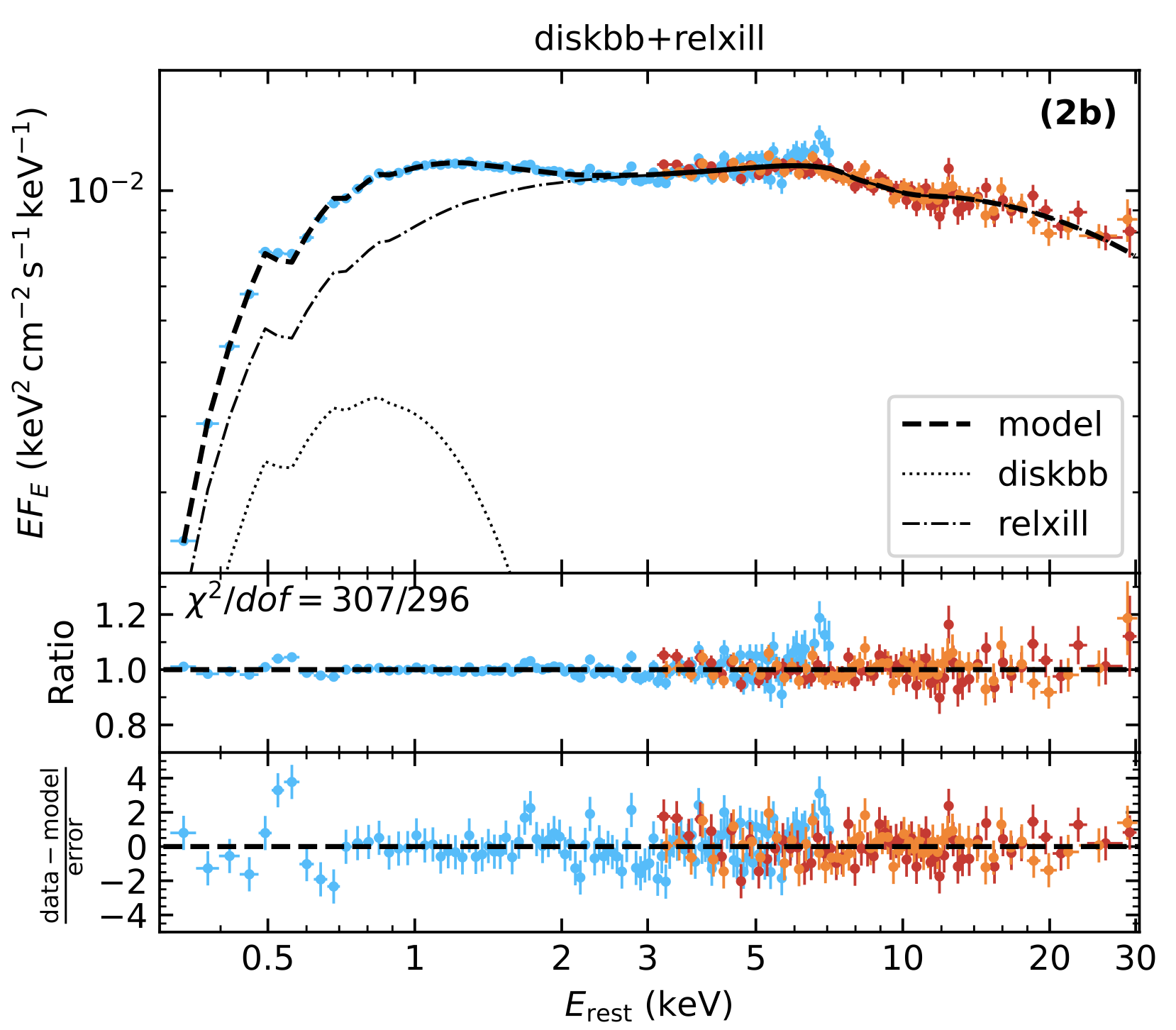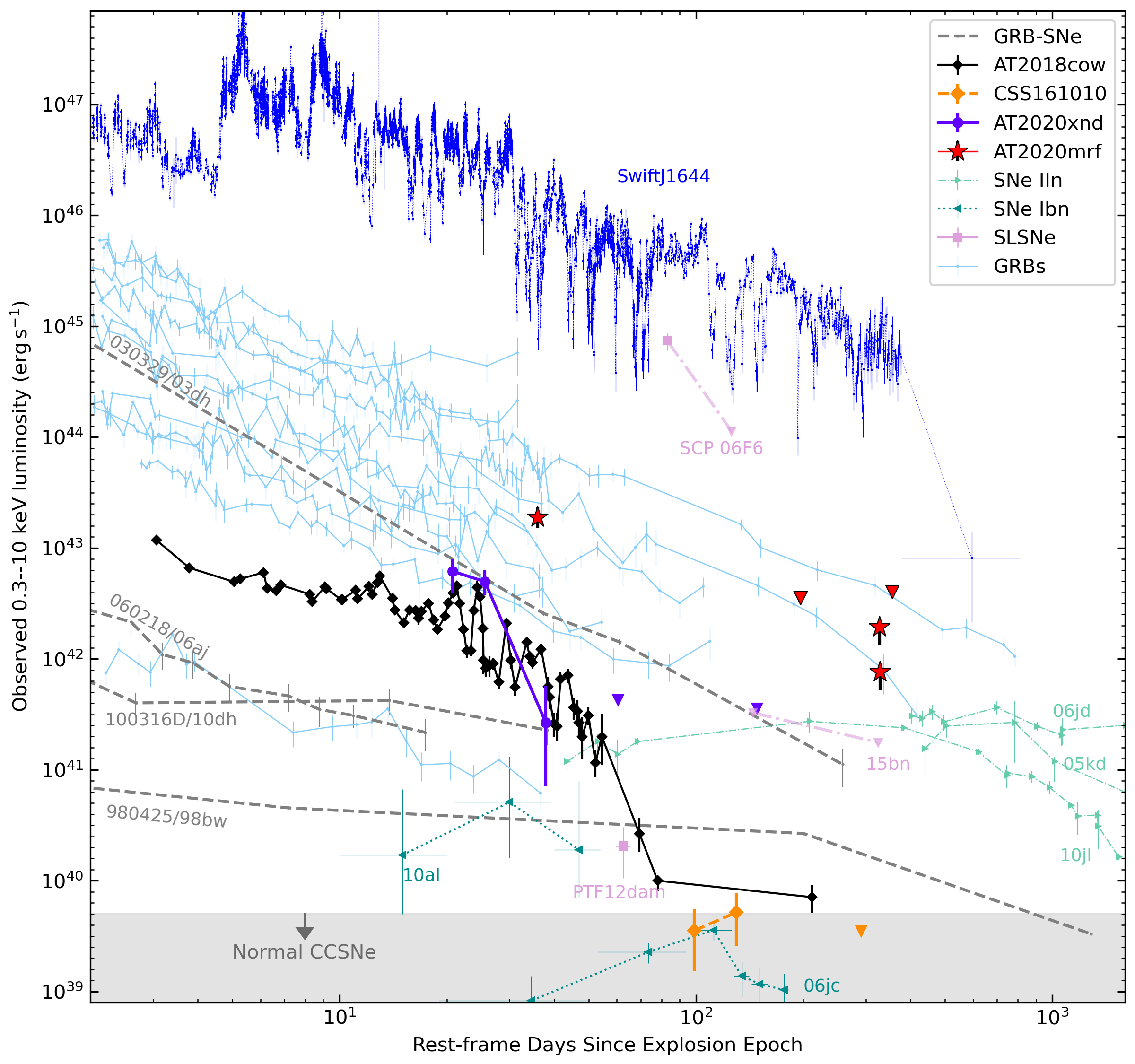Research
I use multi-wavelength observations to study a wide variety of high energy astrophysical transients.Tidal Disruption Events
I am interested in the following two aspects of tidal disruption events (TDEs):* Understanding the real-time formation and evolution of the accretion disks, the corona, and relativistic jets
* Using TDEs as unique probes of the massive black hole population that are otherwise quiescent
With ZTF, we are systematically classifying all TDE candidates with a peak g-band magnitude brighter than 19.5. A reward of this effort is the discovery of an X-ray luminous TDE AT2021ehb. In Yao et al. (2022b), we show that AT2021ehb exhibited a novel soft → hard → soft X-ray spectral transition. We postulate that the initial soft → hard transition can be caused by delayed formation of a magnetically dominated corona. Since the later hard → soft transition is accompanied by a sudden drop of X-ray flux, we propose that it is triggered by thermal--viscous instability as the stellar debris fallback rate declines, which results in a thick → thin transition in the inner accretion flow.

In the hard state NICER and NuSTAR spectra, I present the first detection of a prominent non-thermal X-ray component up to 30keV in a non-jetted TDE, as well as an extremely broad iron emission line indicative of relativistic disk reflection. My spectral modeling measures the ionization of the disk to be high (logξ~4) and the inclination to be i~43 deg. This work opens up the possibility for using next-generation X-ray instruments (such as XRISM and Athena) to constrain the spin of quiescent BHs via TDE reflection spectroscopy.
Fast Blue Optical Transient
The discovery of long gamma-ray bursts and magnetars dramatically widened outcomes of massive star endings. This frontier of massive star deaths continues to be vigorous. In recent years, a major development is the realization that a large fraction of massive stars undergo episodic and significant masses losses, and in some cases these losses serve as omens of their deaths --- supernovae (SNe). This is revealed by the fast blue optical transients (FBOTs) phenomena.In Yao et al. (2020), I studied the subluminous FBOT SN2019dge. I showed that its ejecta and nickel masses are ten times lower than that of a typical stripped envelope SNe. My analysis of the optical and HST/UVIS spectra suggested interaction between the SN ejecta and helium-rich circumstellar material (CSM), which extends from ~1e+13 cm to ~1e+16 cm. Some sub-luminous FBOTs come from ultra-stripped progenitors in close binary systems.

In Yao et al. (2022a), I studied the luminous FBOT AT2022mrf. I modeled the radio observations, finding evidence of inhomogeneous dense CSM out to ~1e+17 cm. Using SRG and Chandra, I showed that the high X-ray luminosity and long-lasting X-ray fast variability of AT2020mrf point to the existence of an actively accreting BH or a highly spinning magnetar. I showed that all five luminous FBOTs come from dwarf star-forming galaxies, and further established luminous FBOTs as a new class of engine-driven massive star explosions.
Black Hole Binaries with Faint X-ray Outbursts
Low-mass Xray binaries (LMXBs) contain a neutron star or BH accretor and a low-mass companion star. Some BH LMXBs exhibit prolific outbursts, during which they transition between distinct X-ray soft/hard states. AT2019wey was discovered as an optical transient, and an associated X-ray transient was found by SRG. I led a comprehensive follow-up observing campaign, revealing that it is a Galactic LMXB with a candidate BH accretor. My work has explored the phenomenology of BH LMXBs, and motivated searching for similar systems in wide field time domain surveys.In Yao et al. (2021a), using X-ray spectral-timing analysis, I showed that AT2019wey had only stayed in the canonical hard states, while never transitioned to the soft states. I found that only a small fraction of recorded BH LMXB outbursts display outbursts with long plateau phases in the hard states, which could be accounted for by the slow increase of their low mass accretion rates.
In Yao et al. (2021b), I performed detailed analysis on AT2019wey’s multi-wavelength SED evolution, showing that it has an inner advection dominated accretion flow and a truncated disk. This confirms the widely accepted model for short-period BH LMXBs in the hard states. I also showed that the optical light curve of AT2019wey is analogous to the Z Cam class of dwarf novae, where the flat light curve profile is caused by the balance between disk accretion rate and mass transfer rate from the companion star.
